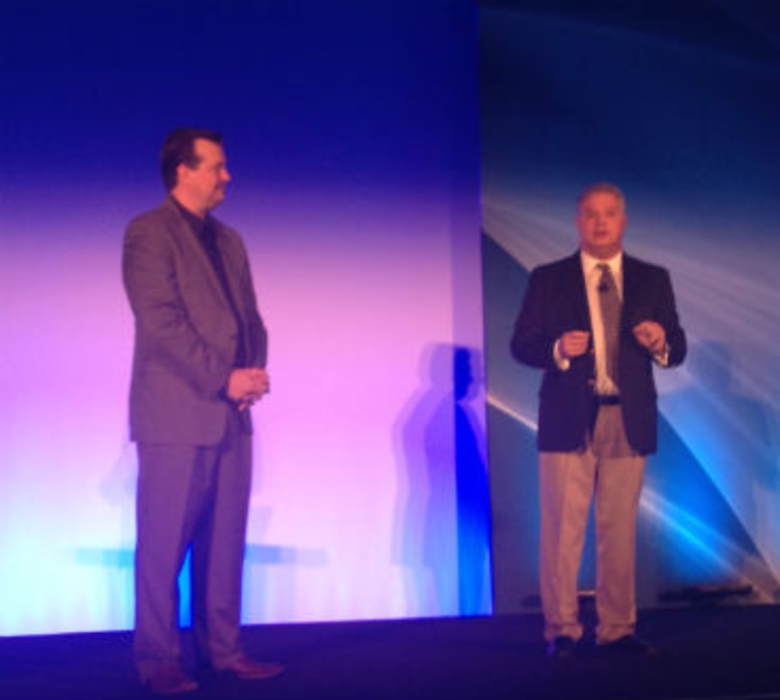There’s a huge culture chasm between customer and businesses today, Leigh McMullen and Gene Alvarez asserted in the opening keynote of the Gartner Customer 360 Summit 2014.
According to the two Gartner managing VPs, transparency has exposed companies’ faults even as customer expectations continue to increase. Organizations will have to stay nimble and transform to meet those continually changing expectations. “Customer-centric organizations will always win,” McMullen said, adding that enterprises will have to transform to be customer centric if they’re not.
But how can companies transform and transition to cross that culture chasm?
One challenge, McMullen and Alvarez said is that there are multiple sub-cultures with their own objectives within each organization, so it’s challenging to get everyone aligned around the customer.
But “culture [change] is a not wicked problem,” McMullen said. “It’s deceptively easy.” It starts with strong, authentic leadership.
The way forward, Alvarez added, is to build an organization powered by purpose. Purpose helps to build organizational collaboration, and helps employees understand the corporate mission and how their role aligns with it. This starts with creating and communicating the enterprise mission, is followed by strategy that aligns with and supports that mission, then drives each manager’s personal goals, which then drives each of their team’s personal goals. It’s an idea Gartner calls “a leader of one” and provides more clarity of purpose. “Leadership sets the tempo and metrics set direction,” McMullen said.
Alvarez cited Gartner’s 12 ways to create a customer-driven culture, show here in a photo by attendee Antonio Wanderley:
Another great insight by @Gartner_inc: Call to action #GartnerCRM 12 ways to create a customer driven culture pic.twitter.com/KYV8KxSUaA
— Antonio Wanderley (@antoniowand) May 19, 2014
McMullen and Alvarez stressed that to change an organization’s culture its leadership needs to change the personal brand of each employee. “An organization’s brand is basically the aggregate of everyone’s personal brand within it,” McMullen said, adding that the personal brand is the most effective lever for real change—and will enable a customer-centric culture to become self-sustaining. Employees want to learn and grow, he said. So use the tools you have to drive change and then turn the process over to the employees who should own them.
Governance is how you wire all this together, McMullen and Alvarez said.
What you measure impacts culture. Consider service availability versus service recoverability, McMullen said. How does measuring one versus the other impact your culture? Service availability is about managing risk; it’s where failure is not an option. Recoverability is about problem solving and being agile. Neither is “right.” You have to find what works to drive the culture that you want, he said, adding that given no other direction, metrics will guide people’s behaviors. “This is where you prove your values; to put your measurements where your mouth is.”
McMullen cited Dan Pink in saying that what’s really motivates people is autonomy, mastery, and purpose. Companies need to have incredibly clear mission boundaries. For example, push decision rights down to the employees who need to make decisions in real time; make leadership roles dynamic, so the person who’s the “leader” at a given moment is the person who should or needs to be in charge based on circumstances; have the team own process improvement; and provide values-oriented incentives and values-centric measurements. Financial incentives won’t work with someone who’s driven by innovation, for example; what motivates that person is having the time to be innovative.
Companies that are committed to customer centricity have leadership that communicates and lives the organization’s values, Alvarez said. They also have a clear vision and strategy, metrics that align with customer-centric objectives, employee rewards that are tied to customer values, and activity seek and listen to customer input, among other approaches.
Transforming to a customer-centric culture is hard, but it’s not complex, McMullen added. “It’s like walking out of the desert: Put one foot in front of the other.”
Companies that will succeed long term in today’s customer-focus market will build an agile culture that is powered by purpose and personal brand, thus self-reinforcing and self-sustaining. The organization’s culture then becomes an engine of continuous improvement, Alvarez said, that’s able to keep pace with changing customer needs and expectations.








